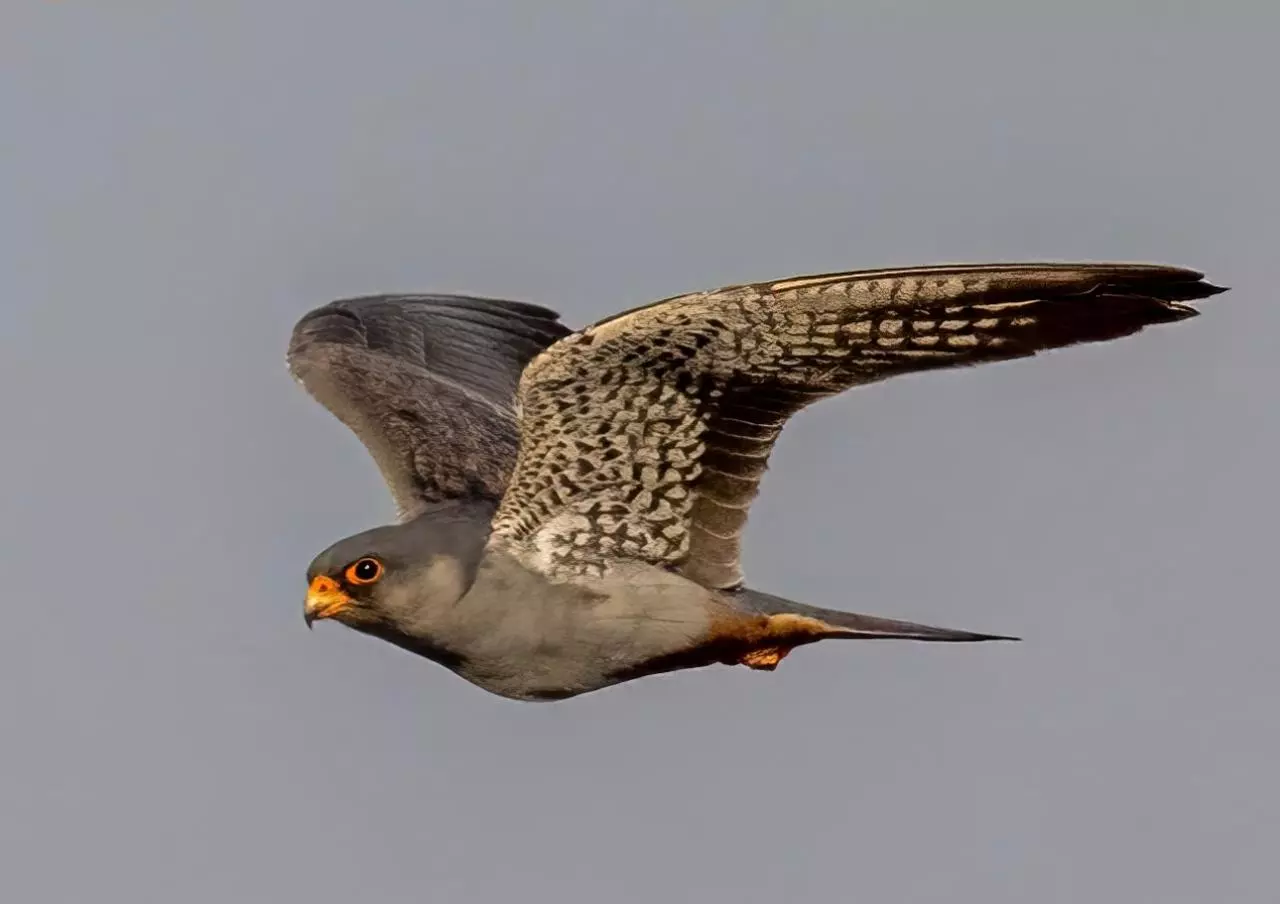Migration marvel: Rare Amur Falcon sighting stuns birders

Hyderabad:
In a remarkable find, city-based wildlife photographer and birder Anindita Mukherji has captured the picture of an Amur falcon in the Yenkathala grasslands in Mominpet of Rangareddy district on Sunday. The find is unique as the spot is not in the typical migration route of the falcon and has astonished the local wildlife community.
Firstly, the Amur falcon (Falco amurensis), known for its annual journey from Russia to Africa via India, usually passes through Nagaland, Manipur and other north-east states, peninsular India or Maharashtra. While a few sightings have been reported in northern Telangana, the spotting of an Amur falcon near Hyderabad is unprecedented.
Secondly, the timing of this sighting is puzzling. Amur falcons typically leave Indian shores around January. The fact that this lone bird has stayed beyond the migration season and ventured further south added to the mystery, raised questions over who what prompted such a deviation from the usual migratory path and what factors influence its decision to stay back.
Mukherji says she was on a visit to Yenkathala on Sunday to watch owls but found a female Amur falcon perched on a tree. She searched for the male bird in the vicinity but couldn’t find one. The Yankathala grassland is home to nearly 200 bird species which include many migrants. Apart from birds, rare Indian grey wolf was also spotted here besides a number of foxes.
The Amur falcons embark on a bold annual expedition from their breeding grounds in Russia and China to winter in southern Africa, covering a remarkable 22,000 km in their round trip.
Mukherji, known for her dedication to wildlife conservation through photography, expressed her excitement at the sighting, emphasizing the importance of preserving natural habitats and understanding avian behavior amidst changing environmental conditions.
Aasheesh Pittie, renowned ornithologist and editor of journal Indian BIRDS, says sighting of the Amur falcon down south was definitely not common and was a sign of thriving ecology for the migratory raptor which mostly feeds on insects.
Bird enthusiast and blogger Humayun Taher remarked that the sighting of the lone bird was interesting. However, he exercised caution, suggesting that it could have veered off from its flock. He further noted that migration patterns might have been altered due to urban expansion.

